
scrounge: /skrounj/ informal verb: to actively seek [books] from any available source
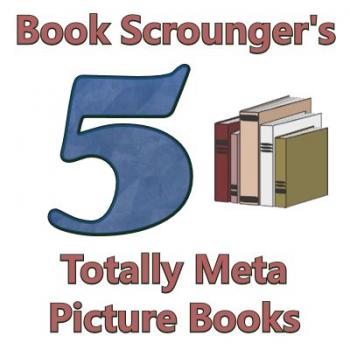
Dictionary.com defines "meta" as: "pertaining to or noting a story, conversation, character, etc., that consciously references or comments upon its own subject or features, often in the form of parody."
See also: breaking the fourth wall -- in other words, when something such as a play, movie, or book acts as if conscious of its status as a play, movie, or book, by means of referencing the audience, alluding to itself as fictional, etc. Here are some picture books that, in one way or another, seem conscious of their audience, or of themselves as books.
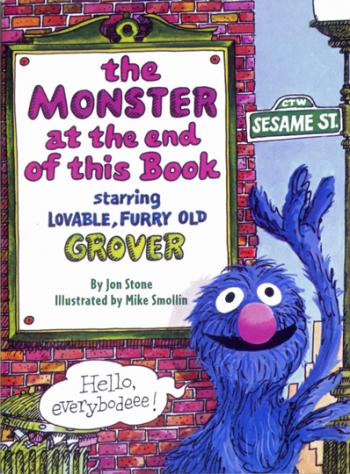
While I'm generally not a fan of picture books based on TV characters, The Monster at the End of This Book is a clear exception. Since it's been around for 45 years now, this is probably one of the more obvious meta picture books for people from my generation. Grover is quite emphatic throughout the book that the reader must not turn any more pages, because that will only get them closer to the monster at the end of the book, and he devises all kinds of ways to make them/us stop. Even though I didn't grow up with this book, I've really enjoyed it, and my children have too -- especially once they realized it wasn't as scary as it sounded.
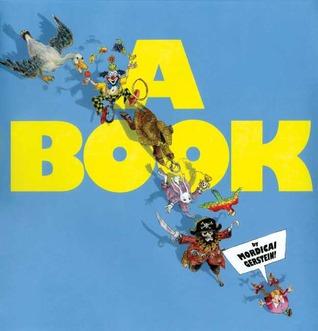
A Book, by Mordicai Gerstein, is almost entirely meta, because the characters know they live in a book, and the main character is a girl in search of her story. She lives with family members who go off to their "character jobs" in the morning, while she has to find out what hers is, searching through pages of fairy tale characters, mysterious characters, pirates, and even a historical novel. By the end, she finds a way to take ownership of her distinct story. I thought this book was pretty clever, and I like how the scenes are drawn at something of an angle, with shadows that make it feel as though you're looking down into a three-dimensional world rather than the flat pages of a typical book.
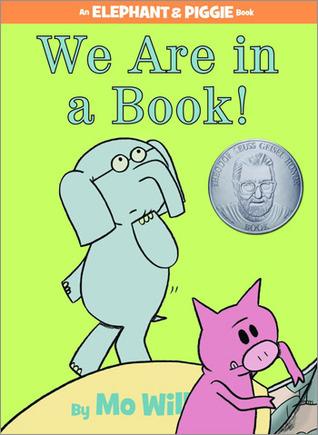
All of us here enjoy the "Elephant & Piggie" series by Mo Willems, but We Are in a Book! is definitely my favorite. These books are written in "graphic novel" style, with colored speech bubbles to make it easier for young readers to see who is talking, though these can be enjoyed by pre-readers as well. In this book, Gerald (the elephant) and Piggie become aware that they are being read by a reader. This is very exciting to them -- until Piggie informs Gerald that the book is eventually going to end, which causes a bit of a freak-out.
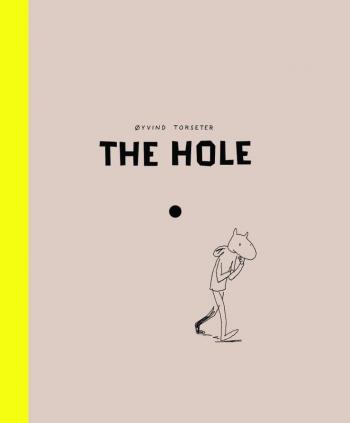
The Hole, by Norwegian artist Oyvind Torseter, was an interesting library find for us -- the book simply has a hole punched all the way through it, and the mostly wordless story involves someone moving into his new apartment and encountering "the hole," which moves about until he is finally able to capture it for analysis. Though of course, since the hole goes right through the book, it can never really go away...
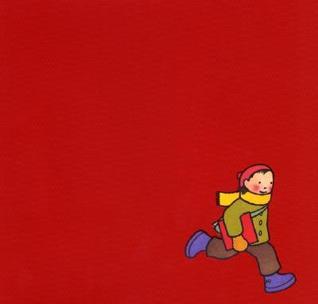
The Red Book, by Barbara Lehman, is a short, wordless story about a boy who finds a magic book, which functions something like a mirror that allows him to make a connection with someone far away.
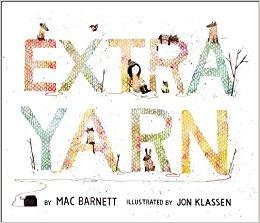
Extra Yarn is an interesting, imaginative tale about how a small town with a lot of soot is transformed when a girl named Annabelle finds a box of extra yarn, which she uses to knit sweaters for everyone and everything she can. The story appears to be set simultaneously in the 1950s (there's a pickup truck) and 1500s (there's an evil archduke and a castle), but I guess that's part of its charm.
I love the illustrations and the way the drab monochromatic tones are gradually lightened up as the colors of the yarn spread. If you've read I Want My Hat Back, the bear shown briefly in this story will probably look familiar, as this is the same artist.
Sometimes I don't like it when stories don't "explain everything" at the end, but I think it's fitting here -- is it a story about magic? or not? I guess you'll have to read it and decide for yourself.
Scrounged From: Our local library
Format: Hardcover
Author: Mac Barnett
Illustrator: Jon Klassen
Pages: 40
Content Advisory: None
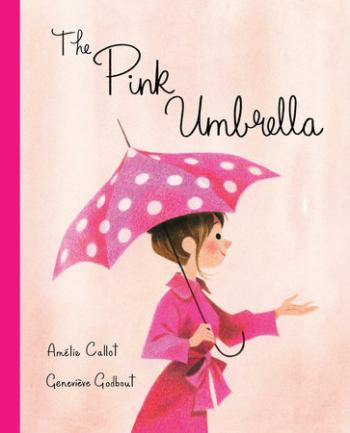
The Pink Umbrella, originally published in French, is a tender story about a woman named Adele who manages a cafe, and loves the sunny weather. But when it rains, she has a hard time coping.
But then someone begins leaving her gifts to help protect her in the rainy weather, and she wonders who it could be...
The illustrations here are just perfect -- there's a lot of pink of course, but it doesn't feel overdone because the tones are so soft and beautiful. The story has just the right touch of romance to it which is communicated through thoughfulness and friendship -- the very best kind, in my opinion.
The only thing I didn't like was how the first quarter or so was written -- it felt like too much direct "summary" that didn't flow very well, and sometimes switched tenses as well. Of course, perhaps the fact that this is a translation is why it feels a bit clunky to me, but it's absolutely worth reading. It's not even that wordy, overall, but probably would appeal more to older children (or adults!) than younger ones.
(Thanks to NetGalley for the review copy.)
Scrounged From: NetGalley
Format: Kindle
Author: Amélie Callot
Illustrator: Geneviève Godbout
Pages: 72
Content Advisory: None
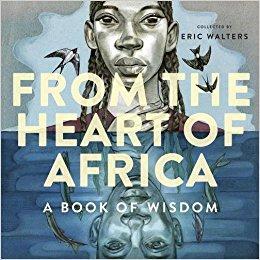
From the Heart of Africa: A Book of Wisdom is a short picture book that includes some sayings/proverbs/aphorisms from people groups on the African continent. As the foreword notes, since aphorisms are universal, the ones found in one region are often similar to those found in other parts of the world, but each is a unique attempt to distill life experience into a short proverb that can communicate wisdom.
Each of the fifteen sayings are illustrated by different artists -- most of whom are from African countries or Canada. The variety of styles and color schemes helps illustrate the diversity of oral cultures that these traditional sayings originate from. Each one also includes a general source (at least to the extent that this can be known), and a brief explanation of the saying.
I like how some of these sayings are familiar ("Many hands make light work"), while others seem more unique ("I pointed out to you the stars, but all you saw was the tip of my finger"). There is also a good mix of proverbs that celebrate community, along with others that encourage independence and creativity.
(Thanks to NetGalley for the review copy.)
Scrounged From: NetGalley
Format: Kindle
Author: Eric Walters
Illustrators: Many! Each illustrator is identified with a brief bio at the end of the book.
Pages: 38
Content Advisory: None
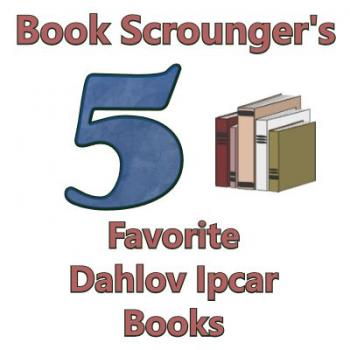
Artist Dahlov Ipcar died this past February, but today would have been her 100th birthday. In addition to a long career as an artist, she spent most of her life farming in the state of Maine (my home state).
Since I lack any familiarity with the "art world" in general, I probably would not have known much about her work if it had not been for her delightfully illustrated board books published by Islandport Press, which we first discovered when my oldest child was a baby.
After reading one, it became easier to spot her distinctive style when I saw it elsewhere, since her work is celebrated in many places in the state.
I love her use of color and joyful depictions of animals (both wild and domestic). Here are some of her books we've enjoyed the most:
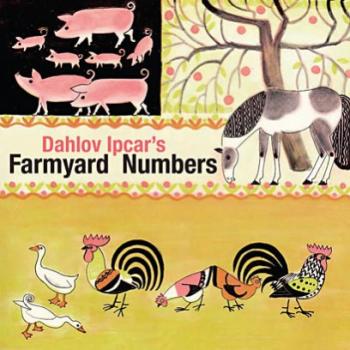
1. Farmyard Numbers was our introduction to Ipcar's art. It's a simple one-to-ten counting board book featuring favorite farm animals, and gentle rhyming text. Several of the illustrations in this book are cropped from larger scenes in Ipcar's earlier, longer book about the trials and joys of farm life called Hardscrabble Harvest.
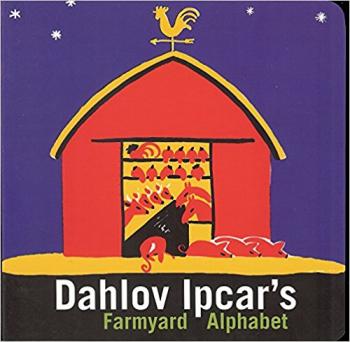
2. Farmyard Alphabet continues with the farming theme (which Ipcar had quite a lot of experience with). Short rhyming lines show us a different aspect of farm life for each letter -- Q for quilt, T for tractor ("that does everything"), E for eggs, J "is for jars, of jellies and jams," etc.
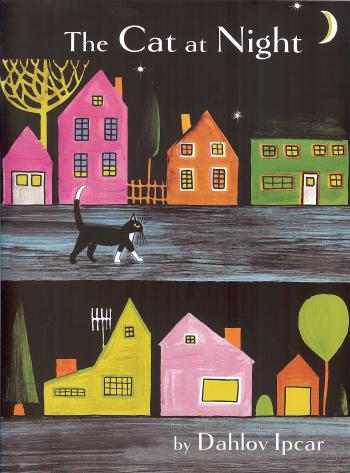
3. The Cat at Night is a wonderful look at the difference between what a cat can see at night and what a person can see. The pages alternate between dark silhouetted scenes and brighter versions of the same scene, showing how the cat knows where to go even when it's dark to us. My children enjoyed trying to find the cat on the silhouetted pages.
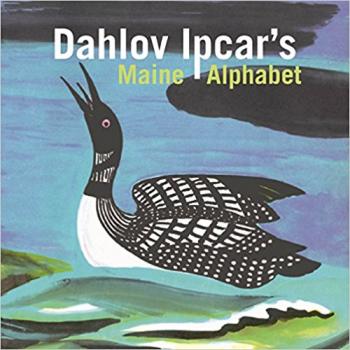
4. Dahlov Ipcar's Maine Alphabet board book is a beautiful celebration of the state that was her home for most of her life. From the coast to the woods (L for lobster and M for moose, of course), this is a lovely rhyming romp through the great state of Maine.
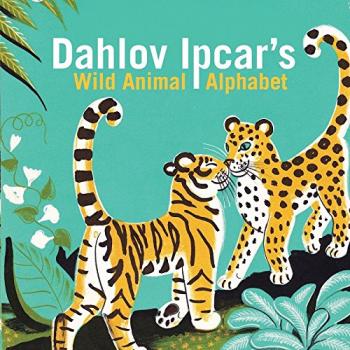
5. I love the different color combinations in Wild Animal Alphabet -- so many earth tones and golds paired with vibrant blues and greens. Once again, the illustrations are accompanied with rhyming text that's "short and sweet" enough to hold the attention of toddlers. From ibex to quail to "zebra, who always comes last," this is a lovely and fun look at wild animals (including a few doing nontypical things like the kangaroo beating on drums).


